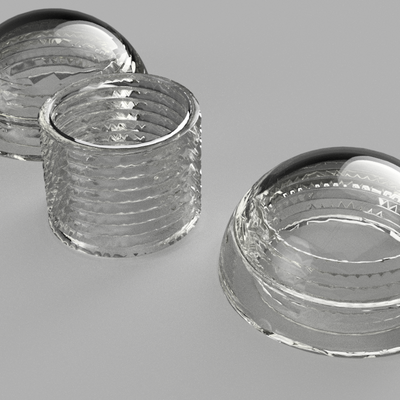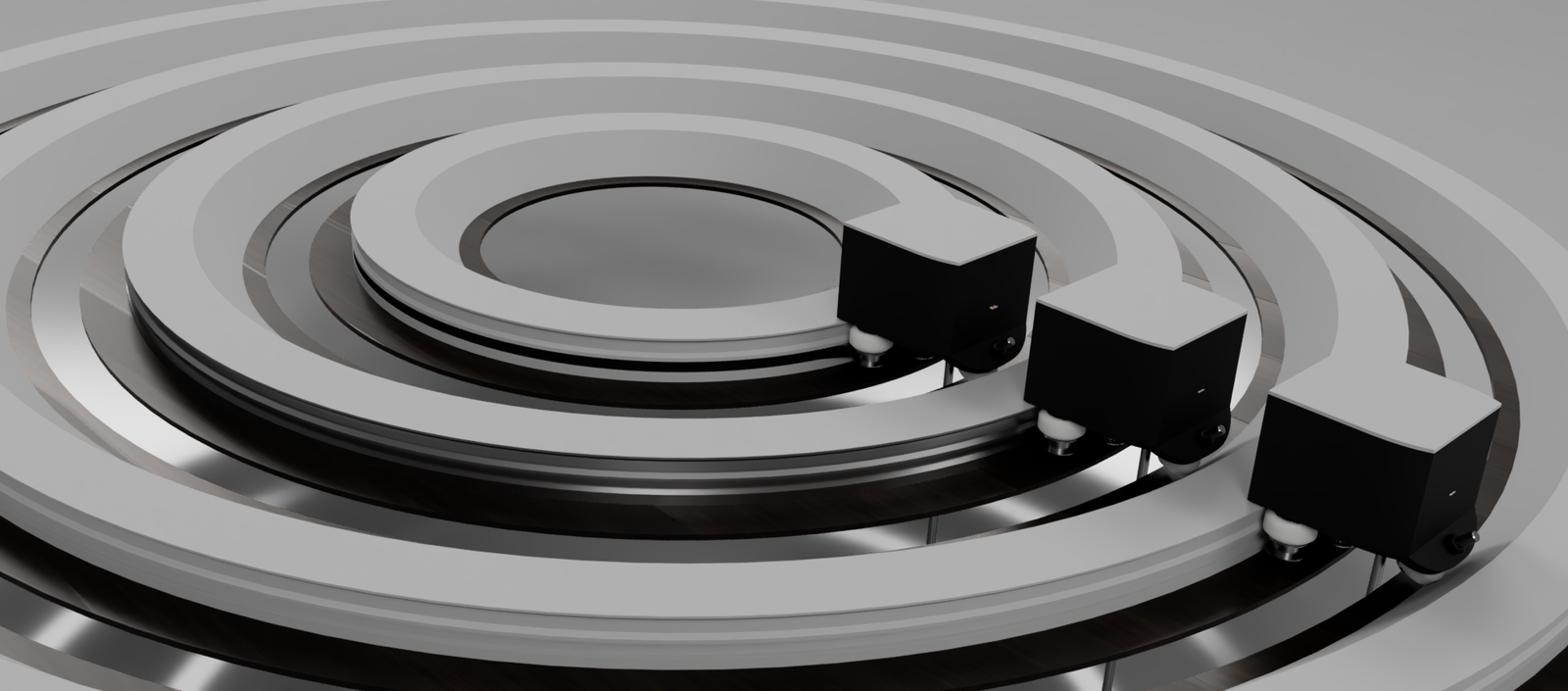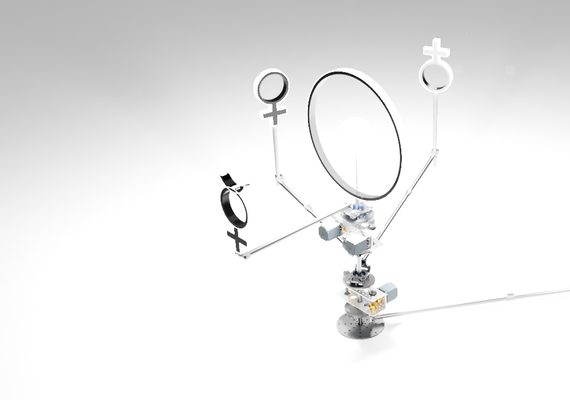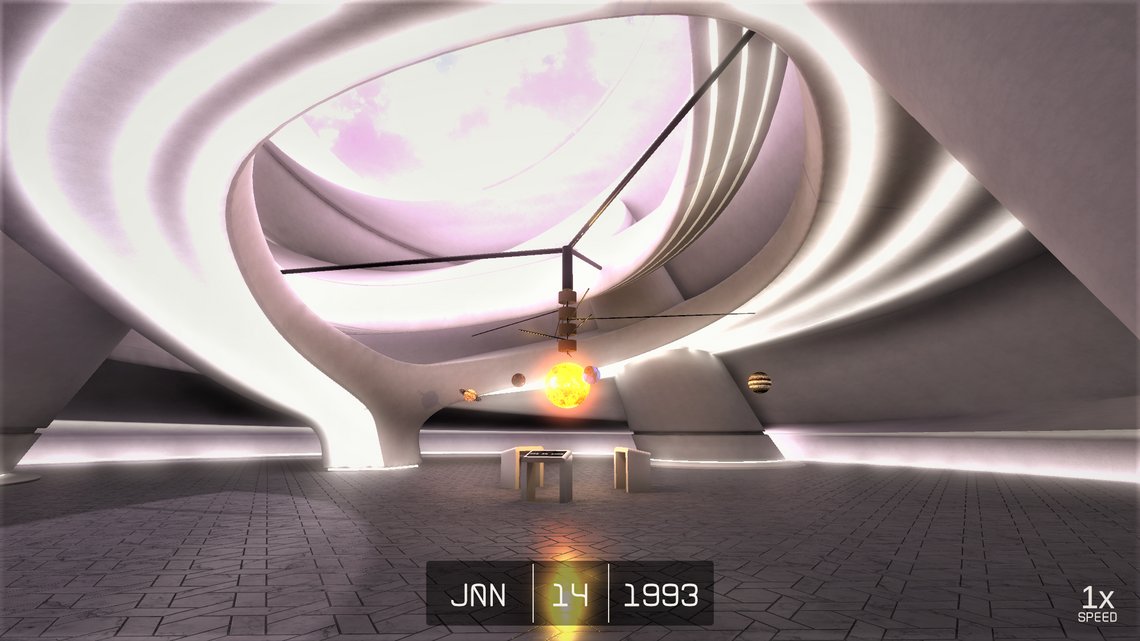Orrery Design: The Orrery

(Heliocentric Solar System Model)
Similar to the interface, the orrery has gone through iterations of design and development.
Primarily, there are two major iterations with slight variations as the project progressed. When designing my the first iteration, the main question I wanted to address was, "How can I make the planets operate independent of each other?"
This lead to several questions that I wanted to address:
- How can I power them independently?
- What mechanism will I use to control the movement?
- Can I scale it in size for use in a range of installations?
- Should it be suspended from the ceiling or stand up?
- How many micro-controllers will I need if they operate in isolation?
- Can it be modular, adding planets later?
- How can I ensure precision while




Version 1

In this iteration I focused mainly on modular design principles where each planet could operate as a separate part of the whole installation.
The design consisted of multiple rings increasing in diameter outward. Each ring was made up of a flat wooden base that supported a circular track. These tracks would then hold carriages similar to those used in manufacturing and storage facilities to move packages around. I also took inspiration from panning camera track systems.
If at first you don't succeed...
While creating a functional carriage that rode along the tracks, I noticed that it move unbearably slow. Addressing this issue I attempted at making an improved carriage that sported NEMA 11 stepper motors. It worked well when powered directly from the power supply. However, a looming problem that I had not found a solution to was powering the stepper motors while they were moving. I researched Slot Car tracks and figured out how to construct the a system as you can see the copper tape used on the ring in the video. This led to a fire hazard because powering multiple NEMA 11 motors required far more power than that circuit could facilitate. This led me to scrapping the design and starting over.
Version 2 - Physical Orrery

I decided to scrap the approach of modular design and consider a way to build a single core structure to support all motors near the center of the installation while allowing the planets to move freely. Multiple sketches led me to a design that had all motors in one place. The central shaft would need to be a tube allowing me to pass wires through to power the structure. Then the planets would sit on arms that could freely rotate around the central tubing while supporting the wait of the planet (or astronomical symbol).

As I improved the design I added lampshade-like covers to conceal the motors, providing a more organic and aesthetic structure. The covers do not impede the rotation of the mechanical parts. This structure allows the orrery to operate in a suspended or standing configuration.
In the video you can see the physically constructed orrery. Due to these unprecedented times in 2020 I was not able to complete and showcase this as my thesis project. This lead me to building the art installation in unity. The upside of this alternative is that I had created all the design files necessary to make the virtual experience. I hope to complete the physical installation moving forward.
Version 2 - Virtual Orrery
This format of this iteration has given me the opportunity to see how i could assemble and setup the installation in a showroom space. My intent was to showcase how it could look in an open gallery or museum space that would allow visitors to experience and interact with the installation.

Please check out the main page to see how you can see the virtual installation in action!
